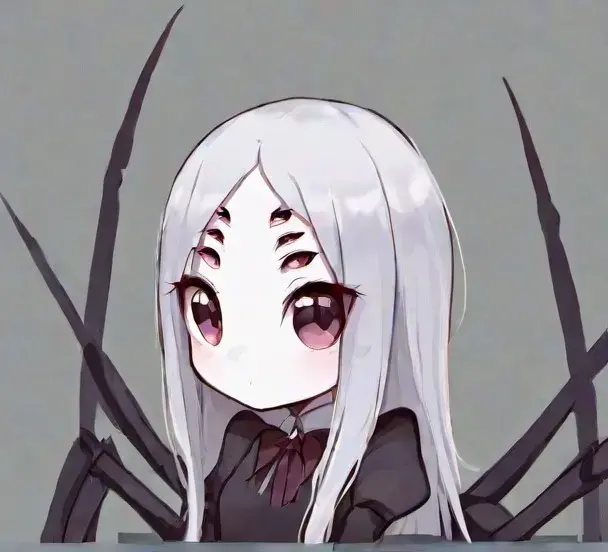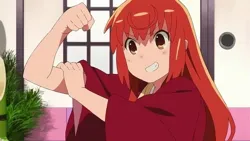A guide for manga newbz like me.
You get used to it pretty quickly.
It’s so natural that I can go between either comic/manga direction and not even notice.
I wonder if my brain would be confused by a manga going L-R?
I can’t speak for your own brain, but I read a translation once (don’t remember what) where they’d mirrored it so it could be read left to right and it absolutely threw my brain for a loop
It happened to me reading pokemon adventure, it is mirrored and it is painful
Its actually my default now so when I read something “normal” I sometimes get confused.
What’s nice is the webtoon format skips it all since it’s just “read down”
but then I have to scrooooolllllll so faaaaarrrrrr
I use assistive touch to do a full swipe whenever I tap the screen. It means my thumb doesn’t get friction burn from all the swiping.
Finally it makes sense. Now i can understand how to read those manga memes on lemmy.
Ah, damn, didn’t know the speech bubbles had top-to-bottom precedence…
I like that when I line them up on a shelf in numerical order, all the pages are lined up in order as well, with the end of one book touching the start of the next.
deleted by creator
If it’s a Western-style book, yes that is so! And by ascending numerical order, I mean number 1 on the left side. When you put English language Book One on the shelf spine facing out, its cover gets turned to the right side (unless it is upside-down!), touching back cover of Book Two. But Manga will have front cover of Book One snug against the left side of the bookshelf, and its back cover touches front cover of Book Two. You should go try it with your books, just to see it happen. Feels good.
deleted by creator
Is this loss?
Glad I wasn’t the only one
The visualization was nice. It’s easy for me to forget. I don’t read them often enough to do this without thinking about it from time to time.
if that’s truly the case, shouldn’t the art form be written as “agnam”?
Fun fact, it used to be right to left (1 letter each and line break in vertical writing, then right to left columns) before they adapted left to right western writings.
They’re mostly gone by now but still some old places keep the order. For example, trad confectionary place named とらや toraya have their shop curtan reads inverse やらと yarato)
It is pronounced agnam.
From panel 9 how do you decide to go down instead of left? From panel2 how do you decide to go left instead of down?
Easy, you just guess the wrong pannel first every time, and then find out when the next page gives you the context.
Have the same question, but hazarding a guess - the rule of thumb would be using the bottom of the cells as guide?
Kind of, yeah. Though if a larger panel is on the right rather than the left you consider the top of the panel rather than the bottom. So like if you swapped 12 with the 9, 10, 11 cluster it would just be 12, 9, 10, 11.
I really am new to manga, but what I have noticed so far is that there are subtle flow queues in the art itself. For example, there might be a very thin line between those three cell and a thicker border between them and the larger cell to the left.
You tend to finish the right to left line to the end of the page before moving down any. So if 2 panels are in the same “line” like 2 and 3 are, then you finish out that line before moving down. In a case where one panel is larger and spans multiple lines it’ll generally be laid out to belong to it’s lowest line if it’s on the left side of the page, or the highest line on the right side of the page. So since 12 covers both the line with 9, and the one with 10 and 11 on it you’ll generally read it as belonging to that lower line and it’ll be 12.
Yay an answer that makes sense
?agnam
TIL, I think I was over thinking it and would have gone from 7->9, and gotten all messed up. Thanks!
Basically the priority is to make as many unbroken right to left lines across the whole page as possible. You don’t generally move down unless you’ve reached the leftmost edge of the page. Notice how here if I draw lines across the panels to show the path my eyes take and read 12 before 10-11 my reading line is going to run back into the line I made already? So you read 9 and go to the next line, considering 12 to be part of that lower line so that your reading lines don’t intersect.

Ahhh thanks for this, I would have also messed up and read 9 -> 12 in this situation as well
No problem! It can be very confusing when you’re first getting into manga trying to figure out how you move through the panels. Once you get the hang of the ideas though most mangaka nowadays have been pretty good at laying out their panels to kind of draw your eyes naturally through the page in the order you need to go.
What are the benefits of a language being written to the left?
What are the benefits of a language being written to the right?
Neither is better or worse than the other, each works how it needs to for its language.
Ink runs when dragged over by a right handed writer moving left. Some systems are objectively better for some reasons, and while accepting all of them as uniquely useful is fine, it’s certainly not an answer that sates my curiosity
Ink runs when dragged over by a right handed writer moving left.
No ink will run as long as you hold your ink brush correctly, see this video for a demonstration of traditional Japanese handwriting, top to bottom, right to left, brush held comfortably by a right handed writer, no ink dragged over:
If you’re trying to make an argument that brushes were superior to quills, I could buy that. But it still seems like a point in favor of right to left, that the opposite requires a higher minimum skill level.
Apparently Hebrew was written with hammer and chisel initially. Holding the hammer with the right hand and chisel with left, writing from right to left allowed to not cover the already written part with the left arm.
Do you assume right-handed english-style writing to be the default way everyone writes the world over, in all languages?
This is just my high talking, but I believe our right-handed dominance is tied to our language being written left to right. Had our ancestors chosen to write from right to left, perhaps we would be a left-handed dominant society.
If you believe there is an objective reason one is better than the other, then I’m all ears.
But it’s a fact that most people are right handed even in areas with right-to-left writing. No reason to speculate on things there’s already concrete information for.
Japanese was written vertically, so characters are ordered from top to bottom while it is the lines which are separated from left to right. The slow leftward advancement allows a person writing on a scroll to write with their right hand while unrolling the scroll gradually with their left. In modern times you can write Japanese horizontally, but in that case you usually write from left to right. Characters written horizontally from right to left is only done in exceptional cases.
Thanks, that makes a lot of sense.
I just realized that top-to-bottom also solves the problem with smearing discussed in another comment. Your hand is moving down, away from the fresh characters. By the time you move over to the next line, the top is already dried. (Especially with the time it takes to fill a line with kanji, which are denser than Latin script.)
deleted by creator
I don’t know if there is an advantage or disadvantage. There are other writing directions as well. Like boustrophedon, which starts in one direction, and then when you get to the end of the line the next line goes the other direction. This sounds like a better way to write to me!
Egyptian hieroglyphs can be written either RTL or LTR, you tell because the animals and humans in the script face the beginning of the line.








